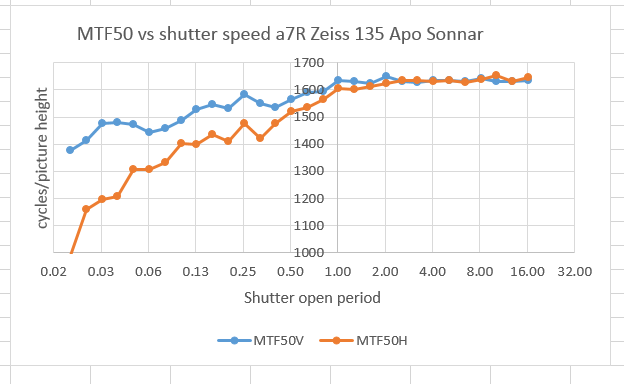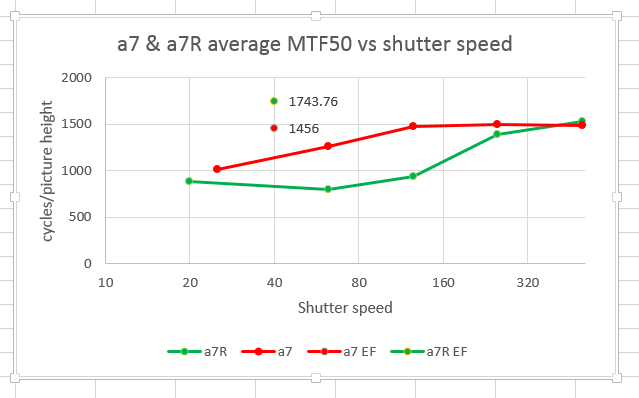A few posts ago, I started presenting MTF data in terms of cycles per picture height. instead of my previous units of cycles per pixel, which required the introduction of an explicit correction factor when comparing cameras of different resolution. This morning, I received a message from a reader containing an interesting question and a… [Read More]
a7R shutter shock at long exposures
I still want to use the Sony a7R for macro work. So today, I set out to discover how long the exposures have to be before shutter shock doesn’t matter. I mounted a Zeiss 135mm f/2 Apo Sonnar ZF.2 to the camera with a Novoflex adapter. I mounted a RRS L-plate to the camera, clipped… [Read More]
Penny wise…
I’ve been using a 49/77mm Heliopan step-up ring to mount my 77mm Heliopan variable ND filter on the Zony 55mm f/1.8 lens. The female threads in the ring had developed a burr that made threading the filter on a little tricky. Sometimes it seemed like it was on firmly, but I noticed that I could… [Read More]
Real-world a7/a7R handheld images
Enough of these charts. I’ve been asked for some real-world handheld images from the Sony a7 and a7R . Happy to oblige. I made five images with each camera, using the Zony 55mm f/1.8 lens in single-shot AF mode. Drive set to single shot to get all 13 bits. ISO 100. 1/125 @ f/6.3. I… [Read More]
Comparing sharpness in cameras with different-sized sensors
A few posts ago, I showed you the results of running slanted-edge modulation transfer function tests on the Sony a7 and a7R, both handheld. Since the cameras have different resolution, and the test results for MTF50 were in terms of cycles/pixel, I multiplied the a7R values by 1.22 so that the MTF50 results were in… [Read More]
- « Previous Page
- 1
- …
- 422
- 423
- 424
- 425
- 426
- …
- 574
- Next Page »


